Sustainability: Batteries & Solar | Water | Heating
|
Take it easy!
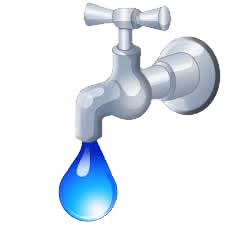
While it is relatively easy to maintain our 12V electricity supply indefinitely while off the grid (recharging our batteries using electrical current generated by solar panels), there is no simple ‘renewable’ option for topping up our water supply – unless it is raining!
Conservation of water is a key factor in free-camping longevity – especially in a compact van with limited on-board water storage capacity.
Our under-floor water tank holds 75 litres. We carry an additional 10L (2 x 5L containers) as a ‘reserve’ supply, and also keep 2 x 1L water bottles in the refrigerator.
It is possible to install a larger water tank. Though at 1 kg per Litre, carrying additional water inflicts a significant penalty on the vehicle’s overall load carrying capacity with respect to the legal Gross Vehicle Mass (GVM).
How long between water refills?
To answer that question we need to know how much water we use each day. So, for the purposes of this discussion, we have measured our daily water usage (x 2 people) for each of the activities below….
-
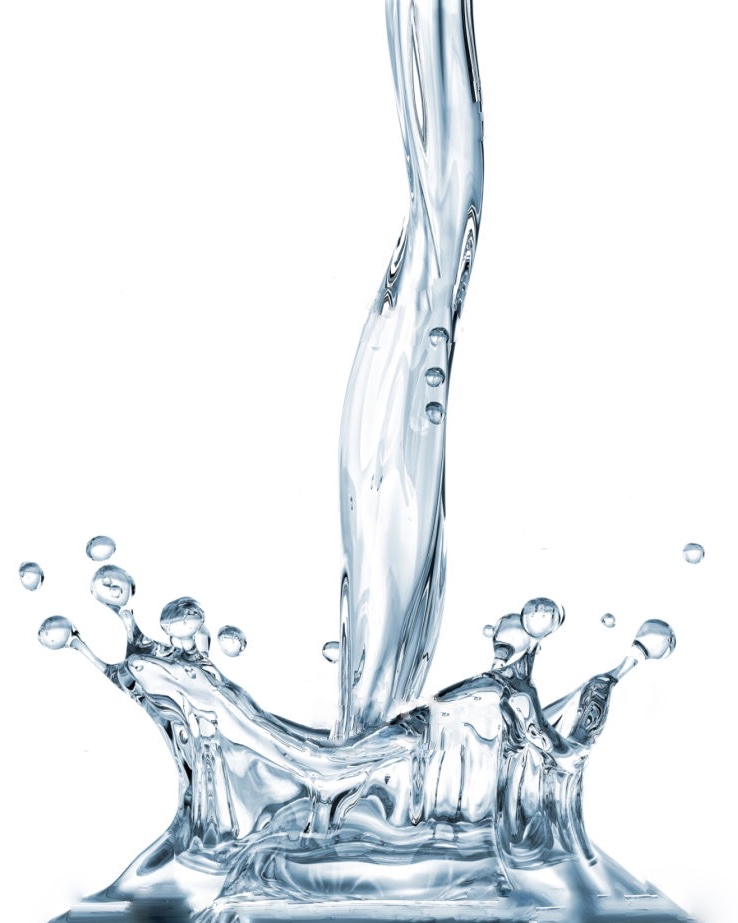 Drinking: 1 L (x2) = 2 L
Drinking: 1 L (x2) = 2 L- Cleaning teeth: 2 x 300 ml (x2) = 1.2 L
- Washing hands: 5 x 350 ml (x2) = 3.5 L
- Flushing toilet: 4 x 250 ml (x2) = 2 L
- Cooking: 1 L
- Washing dishes: 2 x 1000 ml = 2 L
- Shower – hot water ‘bleed’: = 1L
- Showering – not washing hair: 1 x 3 L (x2) = 6 L
- Showering – including washing hair: 1 x 6 L (x2) = 12 L
Which adds up to a total (for two people) of:
-
- 12 litres per day when not using the shower, or
- 25 litres per day when the shower is used.
With a 75 litre water tank, based on the above usage, we have between 3 and 7 days free-camping water capacity, depending on how often we use the shower. (We also have an additional 10 litres of water in reserve.)
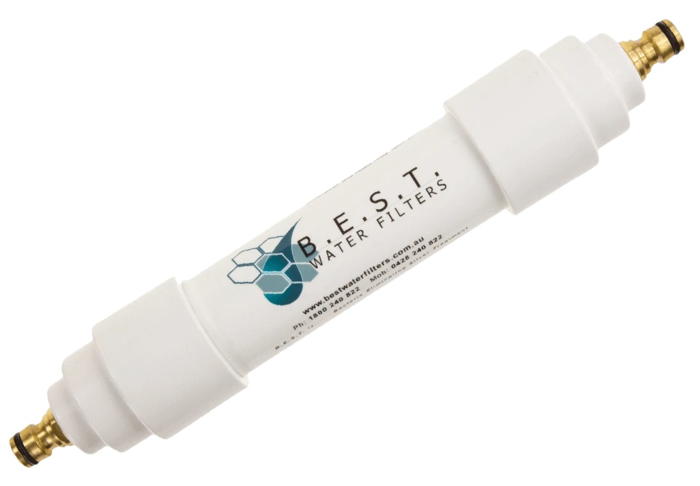 In reality, most places where we travel have access to a potable water source to re-fill our tank when required. We also carry a click-on B.E.S.T water filter, and use it every time we fill the tank.
In reality, most places where we travel have access to a potable water source to re-fill our tank when required. We also carry a click-on B.E.S.T water filter, and use it every time we fill the tank.
It is only when we are a long way off the beaten track, or free camping for more than a few days that our water supply capacity becomes an issue.
If staying in a campground with bathroom and kitchen facilities, we use very little of our onboard water supply – maybe a litre or two each day for cleaning teeth, etc, if not connected to town water. (We have fitted a town water inlet for use when staying in caravan parks and campgrounds with an on-site water connection available, but we only connect this if not using the park amenities.)
-
- See also: Travelling to Central Australia >>>
Conservation
We are all so used to living in an urban environment where fresh, clean water is a seemingly unlimited resource, that it takes some objective thinking and re-adjustment of routine to restrict our usage and conserve our water supply when we are off the grid.
 The Shower: The shower is the major user of our van’s water supply. And this is also our fresh drinking water supply. (Some larger vans enjoy the luxury of separate water tanks for drinking water and the shower.)
The Shower: The shower is the major user of our van’s water supply. And this is also our fresh drinking water supply. (Some larger vans enjoy the luxury of separate water tanks for drinking water and the shower.)
Left running, our shower head dispenses water at the rate of 4 litres per minute using warm water (6 litres per minute on pure cold water). It takes around 15 seconds for hot water to travel through the pipes from the hot water tank, located at the rear of the vehicle, to the shower head at the front of the vehicle – which is around 1 litre of wasted drinking water going down the drain (literally) when we run the shower while waiting for the water to run warm!
With two people showering, that could be 2 litres of precious drinking water being completely wasted in ‘flushing’ the cool water from the shower pipes.
So, when we are showering in a location where we are not able to easily replenish our water tank, we can collect this ‘pre-hot’ water in a tub, and re-use it for washing dishes, etc.
The actual showering procedure involves: turn water on > rinse to get wet > turn water off > lather up with soap > turn water on > rinse to remove soap > turn water off.
Each running of the water is for about 15 – 20 seconds. Based on 4 L/m flow rate, that is 1.25L per ‘rinse’, or about 3 litres of water for a regular wash. Add another couple of litres for longer water rinses if washing hair. So maybe 6 litres total for a shower when washing hair.
In remote locations, or other situations where water is at a greater premium, a top ‘n’ tail with a sponge or hand washer is a far more water-efficient washing option.
The Toilet: We have a flushing toilet installed – a Thetford 220 cassette model. While this is very convenient, and mimics the flushing toilet installed in our home bathroom, it really is a little wasteful when it comes to water usage.
After a water supply valve malfunction while on a recent trip, we left a 600ml water squeeze bottle in the cubicle, which we used to rinse the bowl after each use of the toilet. This did the job just fine, and (as we discovered) used a heap less water than the regular push button flushing mechanism.
Not only did this save precious water, it also reduced the amount of water filling the holding tank, which increased the time between visits to a dump point. Win-win!
Other sustainability options?
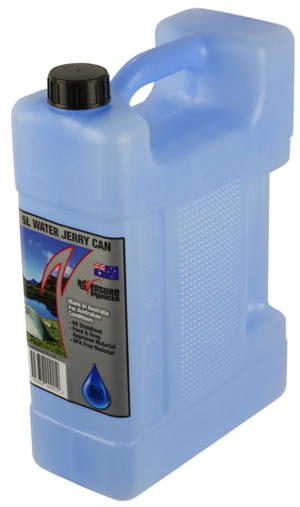 If preparing for an extended stay in a remote location, some careful planning and possibly a larger portable water capacity may be required.
If preparing for an extended stay in a remote location, some careful planning and possibly a larger portable water capacity may be required.
The solid bottles that we carry are one option. Collapsable water bladders are another temporary option that can be stored out of the way when not in use. Yet another option might be to buy a pack of bottled water at a supermarket for a temporary excursion into a remote area. These bottles can be more easily stashed in spare spaces throughout the van, compared to the space-hogging footprint of a single large container.
However, regardless of the container format, this additional water supply needs to be considered in conjunction with the GVM of the vehicle – every 1 litre of additional water is an additional 1kg of weight in the vehicle.
Harvesting rainwater? We haven’t needed to do this yet, but when it is raining, we can rig up a funnel with a spare container (maybe a stored collapsable container) to catch water draining off the awning.
In reality, as noted previously, most places we travel have access to a potable water supply. So long-term water supply hasn’t really been too much of an issue for us (yet).
|
Pump it up Our on-board water tank holds 75 litres, and is fitted permanently under the floor of the van. The only way to draw water from the tank is using the 12V water pump, which is also fitted beneath the floor. What if the water pump fails?
We also carry two 5 litre water bottles, which will assist in this scenario. If the water pump fails, or there is a problem with our 12V electricity supply (that runs the pump), or the underfloor tank or associated plumbing is damaged when travelling on a rough road, we can fall back on the portable water containers – at least until we repair or replace the water pump (see below). Pressure switch issuesWhen the kitchen or shower tap is turned on, the pressure in the water line drops, causing the water pump’s pressure switch to close and turn the pump on, pumping water to the open tap. If the pump fails it is usually the pressure switch which is at fault – either dust and dirt in the switch or arcing within the switch causing the switch to not operate correctly.
Due to its under-floor location, when replacing the switch we smothered the whole switch unit and the joint to the pump with silicone, to prevent the possible entry of dust and dirt in the future. However, some reports suggest it may not be as simple as dust ingress causing the pressure switch to fail, but rather a failing micro switch within the pressure switch unit. Pump upgrade
Importantly, the Seaflo pump is exactly the same size as the SHURflo pump, and has the same mounting hole locations, which makes for a very straightforward swap. We did consider moving the pump to an internal location, but this was a more major project than we had time to undertake, especially when it was so easy to do the straight swap in the existing location. I have cleaned up the old SHURflo pump, storing it securely in an unused space under the driver’s seat, to be used as a spare, just in case the Seaflo pump ever fails while we are travelling. Easy swap. |
|
See also: |
Sustainability: Batteries & Solar | Water | Heating
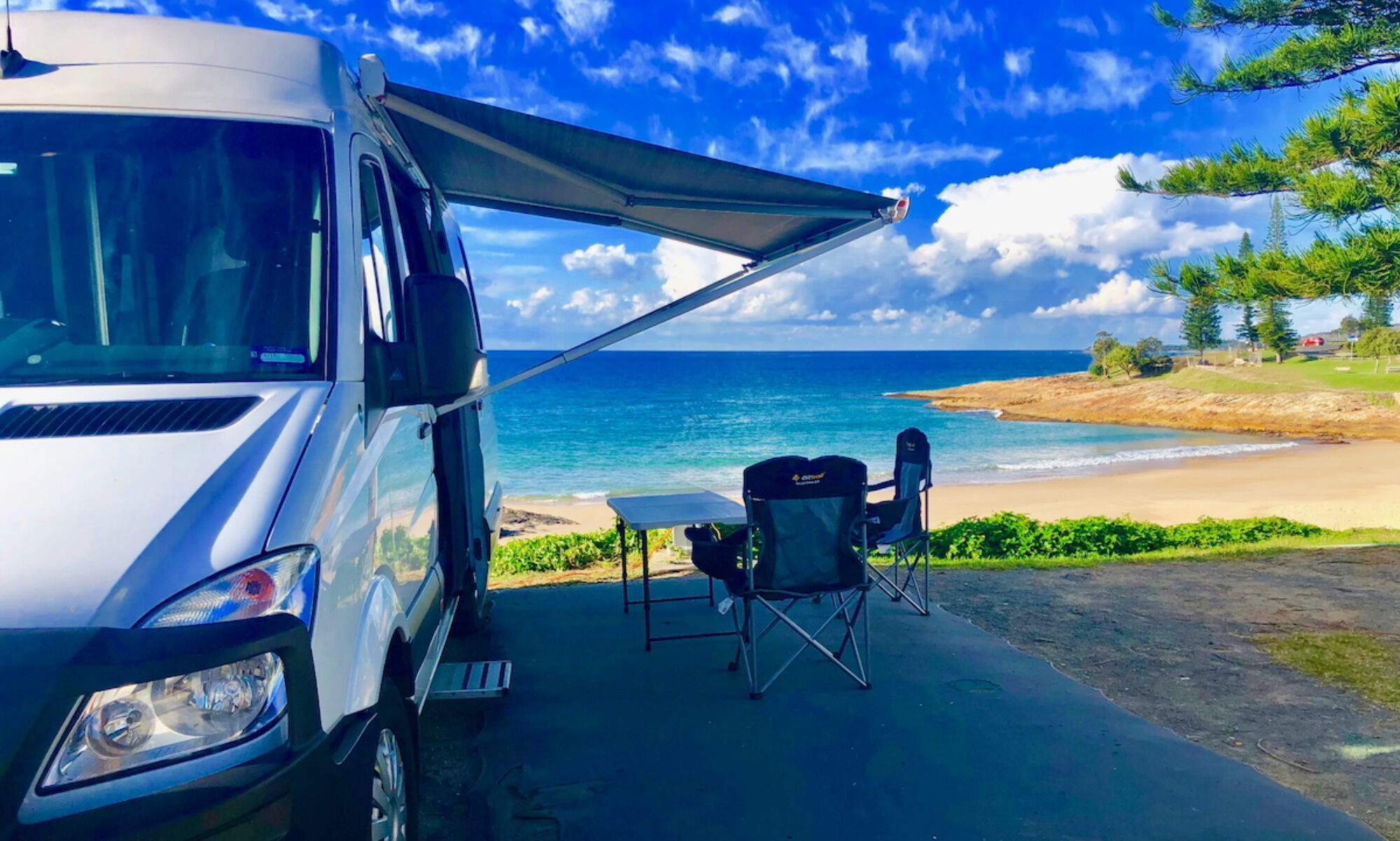
 Simple answer – if the water pump fails we are not able to draw water from the underfloor water tank.
Simple answer – if the water pump fails we are not able to draw water from the underfloor water tank. We previously had a
We previously had a  As part of our preparations for an extended
As part of our preparations for an extended